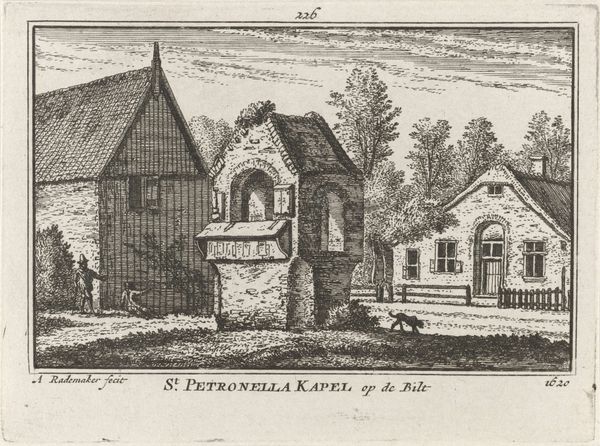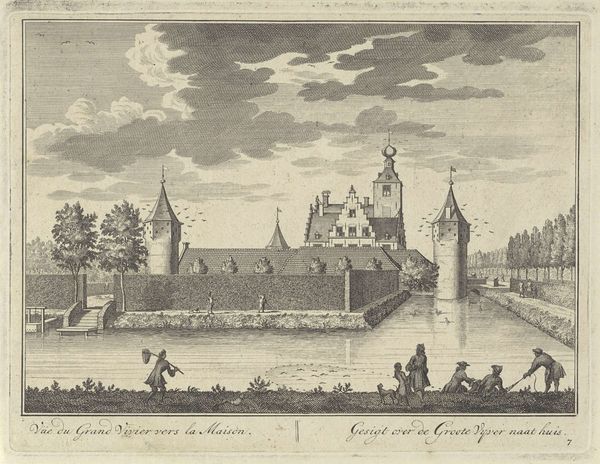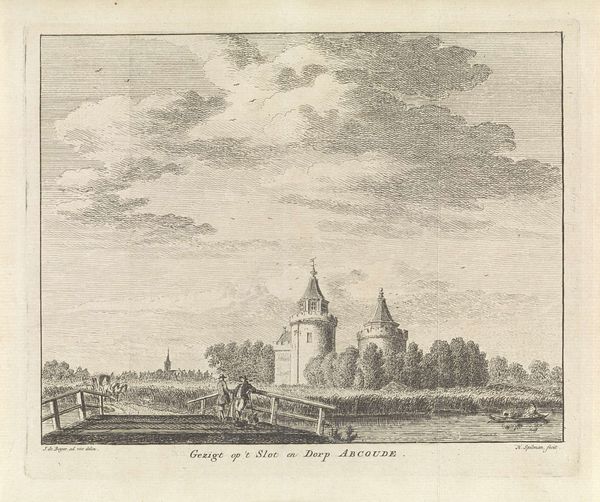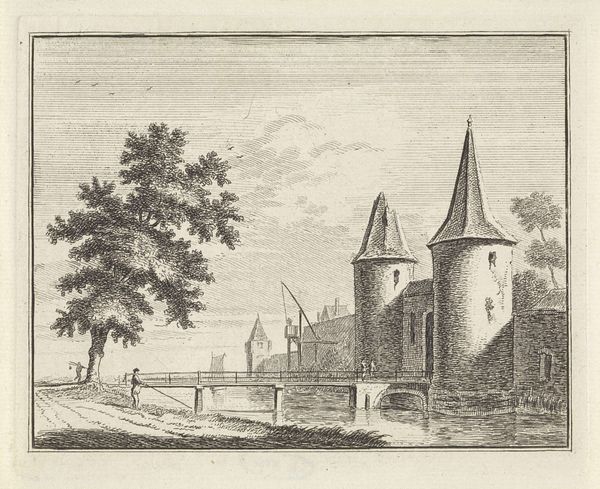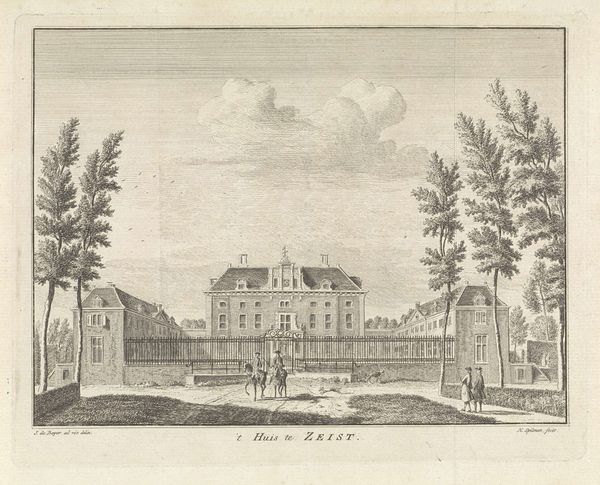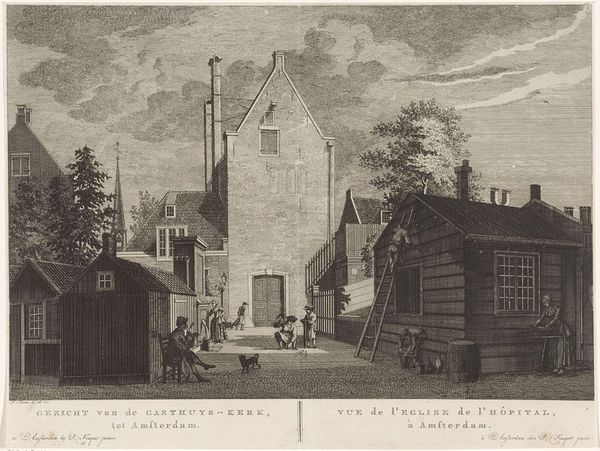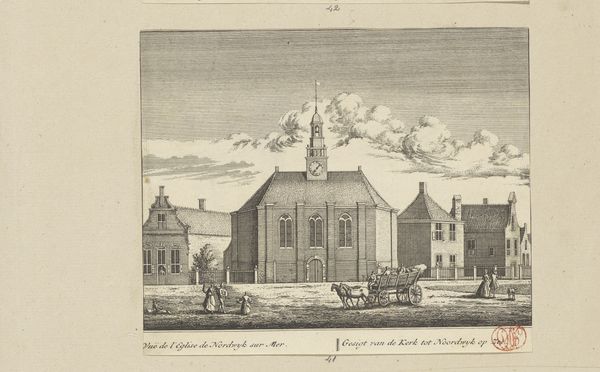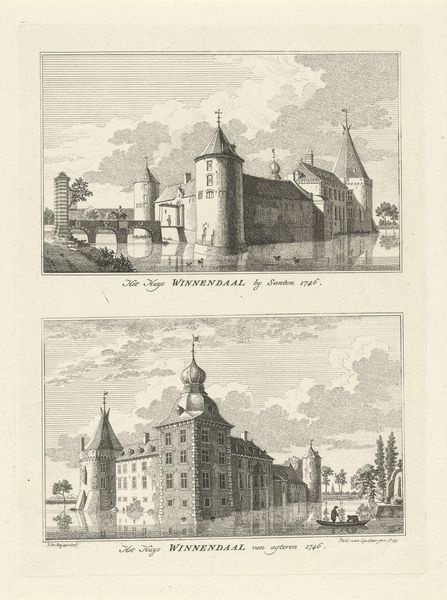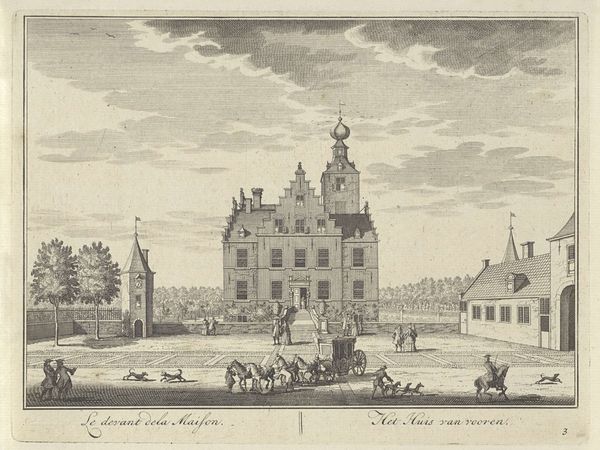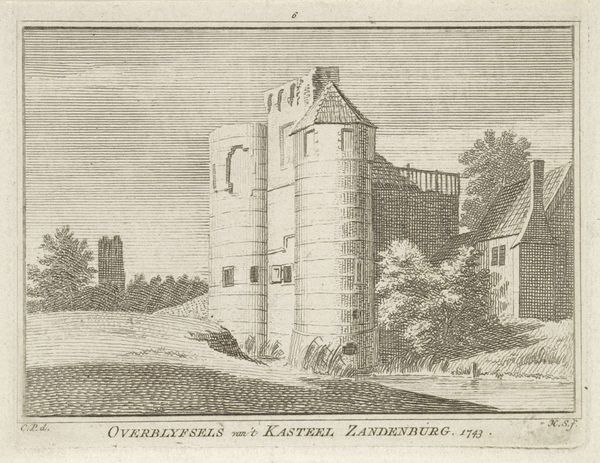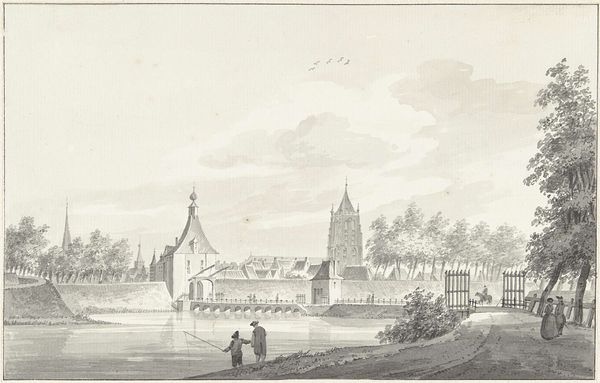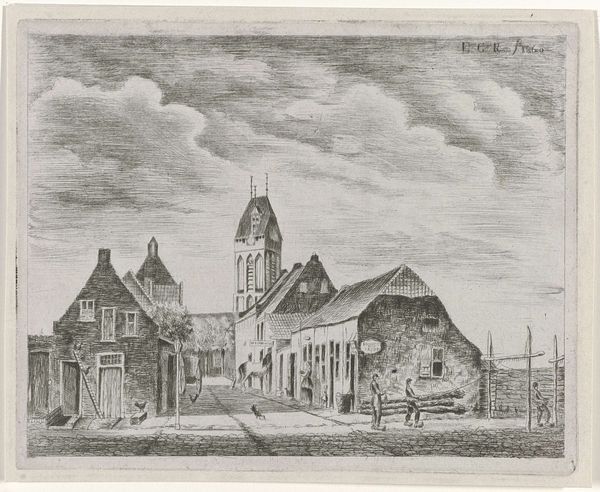
Dimensions: height 85 mm, width 110 mm
Copyright: Rijks Museum: Open Domain
Editor: Here we have Hendrik Spilman’s "Gezicht op kasteel Endegeest te Oegstgeest, 1730," an engraving that likely dates between 1750 and 1792, currently held at the Rijksmuseum. I’m struck by how this formal depiction of the castle contrasts with the everyday scenes of people milling about on the bridge. What do you see in this piece from a historical perspective? Curator: I'm immediately drawn to how this engraving participates in the construction of Dutch identity during the period. Endegeest Castle, as depicted here, wasn't just a building, it was a symbol of power, status, and perhaps even nostalgia. These landscape engravings played a crucial role in promoting a shared sense of belonging. Consider how the artist chooses to frame it, the angle, the inclusion of figures. What stories do you think those details are meant to tell the viewer? Editor: That's fascinating. I suppose the figures create a sense of scale and emphasize the castle’s grandeur, but perhaps also domesticate it somewhat? Make it seem less imposing? Curator: Precisely. It's about situating power within a seemingly accessible, orderly society. The Rijksmuseum's acquisition and display of this piece also tells a story, doesn't it? Think about the evolving role of museums in shaping national narratives and the power dynamics inherent in collecting and exhibiting these objects. Is this engraving a neutral record or does its existence within a national collection imbue it with additional meanings? Editor: It definitely highlights the social and political forces in play. I hadn’t thought about it that way, but it seems obvious now. Curator: And considering that the engraving dates some time after the depicted year of 1730, what impact would the distance in time between event and artistic representation have? Editor: Right. Thank you, I’ve got so much to reflect on!
Comments
No comments
Be the first to comment and join the conversation on the ultimate creative platform.
